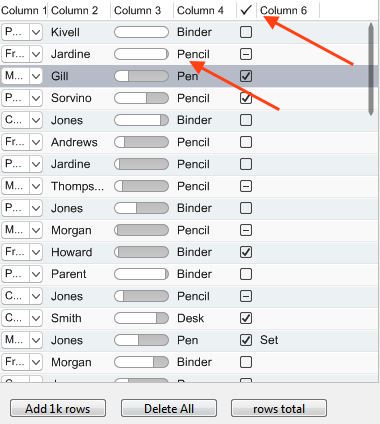[quote=208742:@Michel Bujardet]What you see is the relatively poor dpi of Xojo graphics (72 dpi) with text, when you may be accustomed to Retina, or to screens with a higher dpi.
Also, there is something wrong in your picture : I have synthesized the issue here. On top, the picture you posted, enlarged so pixels show. The drawing is monochrome. Just below, Drawstring in Paint. And bottom, a label.
Notice how the ClearType Windows antialising augments the contrast by the use of opposite colors on the exterior pixels in the two lower lines, while yours is all grey.
I do not know how you draw text, but something is wrong.
At first I thought you had removed the color information from the picture, but looking at the pixels in the button “Delete all” shows the blue and yellow pixels of ClearType. Kind of faded, but there. And to the eye, it does seem crisper.
 [/quote]
[/quote]
Hi Michel,
I like reading your posts and I you’re always trying to help. Much appreciated!
The screenshot above isn’t a good source to analayse. I made with the window snipping tool. Anyway, I only use
standard xojo objects such as the picture and g.drawstring.
dim p as new Picture( self.th(col).width, self.ca.rowHeight )
dim g as Graphics = p.Graphics
g.TextFont = self.ctrDefaultFont
g.TextSize = self.ca.fontSize
g.ForeColor = if(selection, self.ca.selectionTextCol, self.ca.textCol)
dim y as integer = (g.Height+g.TextAscent)/2 - 1
g.DrawString s, pad, y, textWidth, self.ca.truncateCellText
return p
The returned picture is then positioned in the table and drawed. Nothing out of ordinary. I will check the windows settings.
Maybe there’s something wrong with. I’ll post and update for the GridControl 1.0RC4 which is compatible for win,linux,mac.
Maybe then questions will araise again. I have only a win7 system running so I cannot check if this behave on all win systems.

 . just kidding)
. just kidding)
 . just kidding)[/quote]
. just kidding)[/quote]
